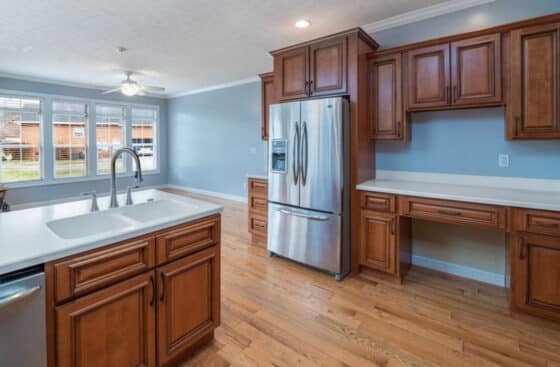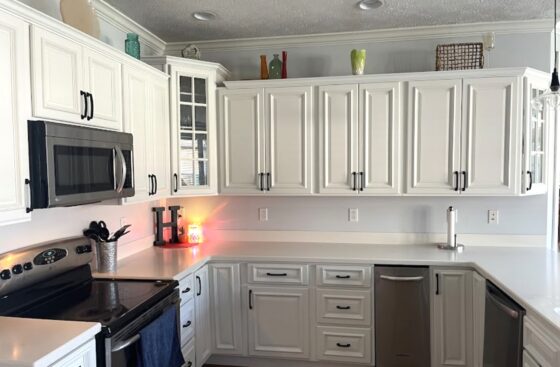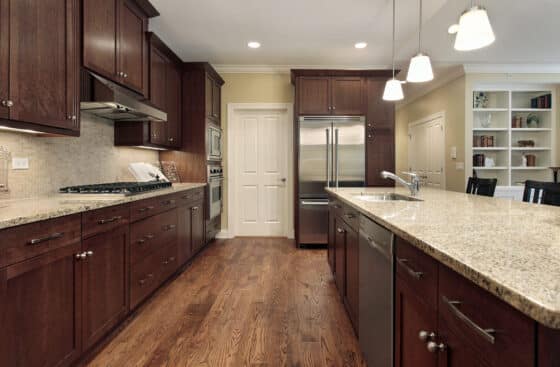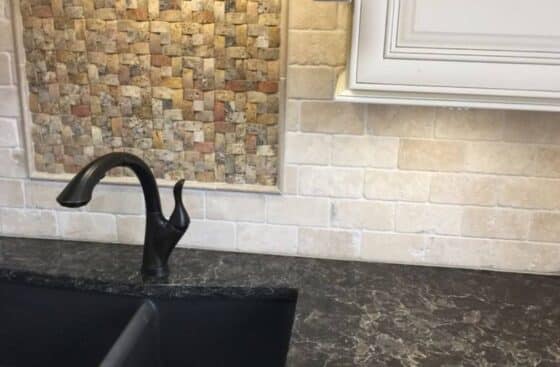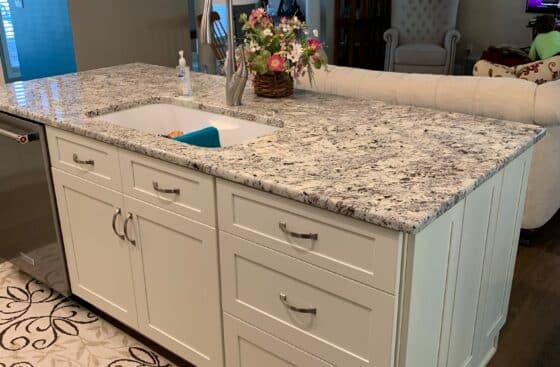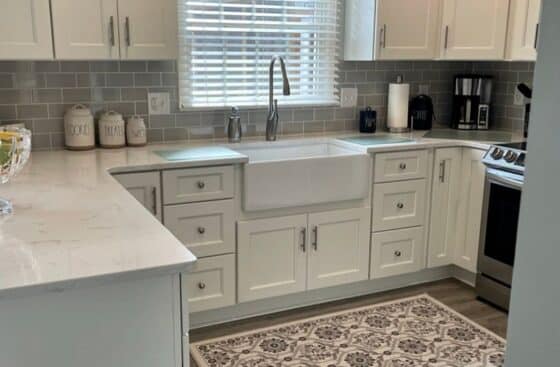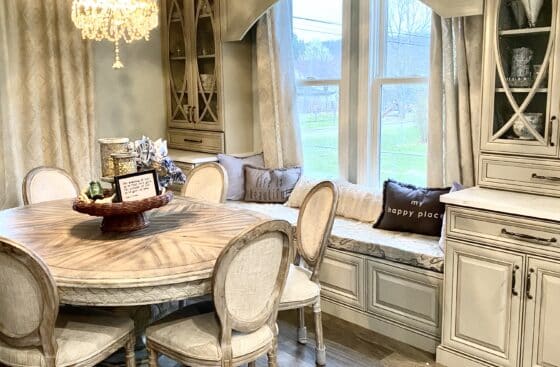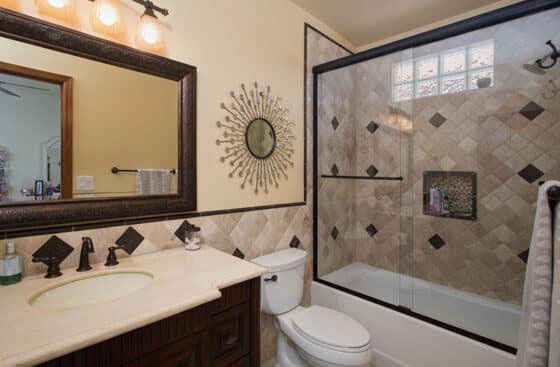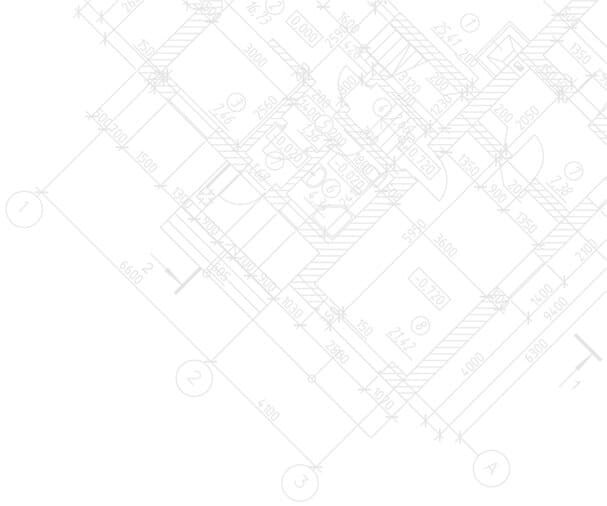
5-Year Warranty
We Stand by our Work
Keith's Kitchens Warranty
5 year limited warranty on construction and finishes. Lifetime warranty on all drawer glides, hinges and box.
Maintenance
Easy Care Instructions
Care & Maintenance
Wood Cabinet Care:
- Use a mild soap, not harsh abrasive cleaner. After cabinet installation and thereafter twice a year. We recommend Murphy’s Oil and a damp, soft microfiber cloth. Caution: Do not soak cabinetry. Only use damp cloth.
- Always dry cabinets after cleaning with a microfiber cloth to eliminate moisture.
- Remove moisture that collects near the sink, oven, range or dishwasher.
- Control humidification of your home is an asset to your furniture as well as your cabinetry. A stable humidity content of 35% to 50% in the cabinetry area.
Painted Wood:
- Wash with warm water mixed with an all-purpose cleaner.
- Wash with one part white vinegar and two parts warm water.
- Do not excessively wet the wood. Rinse with a second damp cloth.
- To remove grease buildup, wipe with a mix of ammonia and water (50/50) then rinse with warm water only.
Laminate Cabinet Care:
- After installation wipe laminate areas with a damp, soft cloth. Glass cleaners may also be used as needed.
RTF- Thermo foil Care:
- Always use a cotton cloth or non-abrasive sponge.
- Wipe with a damp cloth with mild dish soap or a 50/50 mix of water and Simple Green.
Bread/Chopping Boards:
- It is highly important that your boards are properly cared for. They should be kept clean at all times due to the incidental contact that occurs with food items. DO NOT immerse the cutting board in water from a sink or dishwasher. Wipe down after each use with warm towel. Then dry with a paper towel. Avoid using any chemicals.
Granite Counter Tops:
- All of our granite counter tops are sealed prior to installation. If a stone surface stains, treat immediately with a paste of baking soda and water, scrub with a soft brush and rinse thoroughly, repeat until stain is lifted.
Tile Backsplashes or Counters:
- Clean tile with a tub and tile cleaner. Rinse with white vinegar and water mixture (one part vinegar with two parts water).
- Scrub stained grout with a toothbrush dipped in a mild solution of chlorine bleach and water. Then seal with impregnating sealer.
Glossary
Glossary
Terms & Definitions
Door overlay:
this refers to the amount of cabinet door and drawer front that hangs over the cabinet front.
Traditional overlay:
this style leaves 1 ¼” exposed frame around the cabinet.
Full overlay:
this style leaves 3/16” exposed around the cabinet. This is the only type of door we offer at Keith’s Kitchens.
Raised center panel:
the most popular choice for a center panel. This is the middle section of the door.
Flat center panel:
this middle section of the door is often referred to as a recessed door.
Beaded Center Panel:
this middle section has a double bead cut into the panel vertically.
Mullion Door:
Designed to have glass installed. Typically a window pane look.
Cut-out Door:
the center panel of the door is replaced with glass.
Prairie or Lattice:
Designed to have glass installed. The wood slats are on the edges, leaving the center unobstructed.
Mortise and Tenon:
This method of door construction results in the cabinet door having a vertical glue line where the door rail( the horizontal piece) and the stile(the vertical piece) meet.
Mitered:
This door style is very similar to a picture frame where the glue joint is on a 45-degree angle to the cabinet.
Applied molding:
This door style combines the two methods described above. The door is assembled using a typical mortis and tenon technique. After assembly, a mitered, picture-framed piece is laid on top of the door for extra trim covering the perimeter of the center panel area.
Edge Profile:
This refers to the shape or profile cut onto the outer perimeter of the door or counter top.
5 piece drawer:
This type of drawer actually looks like the door itself.
Slab drawer:
This type of drawer is a solid piece. No extra detail, it is flat.
Dovetail joint:
A joint formed by interlocking a series of pins, extending from one end of a board, with the tails cut into another board, then gluing the joint.
Dados:
Grooves on the sides and frames of cabinets in which walls and bottoms of bases are glued and fastened.
Veneers:
A thin piece of wood (usually 1/16” – 1/32”) that is sliced or cut from a log. This wood is then glued over a substrate (particleboard or plywood) so that is can effectively be used in cabinet construction.
Particleboard:
The “ultimate” recycled product, particleboard consists of wood chips pressed together and glued under pressure. The resulting board is then, typically, covered with a melamine or wood veneer material to enhance the appearance and is used in a variety of situations for cabinet manufacturing.

